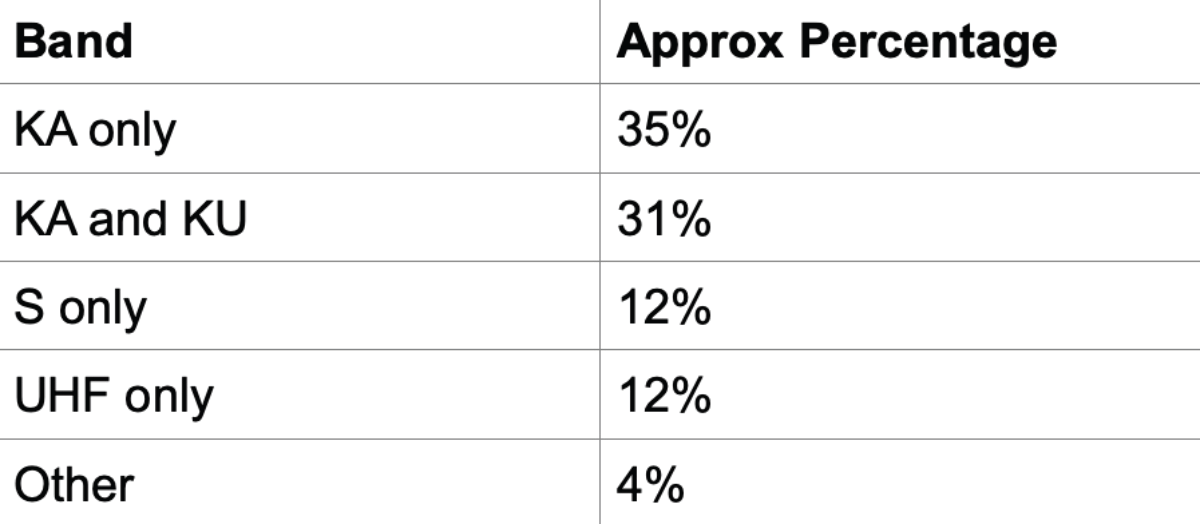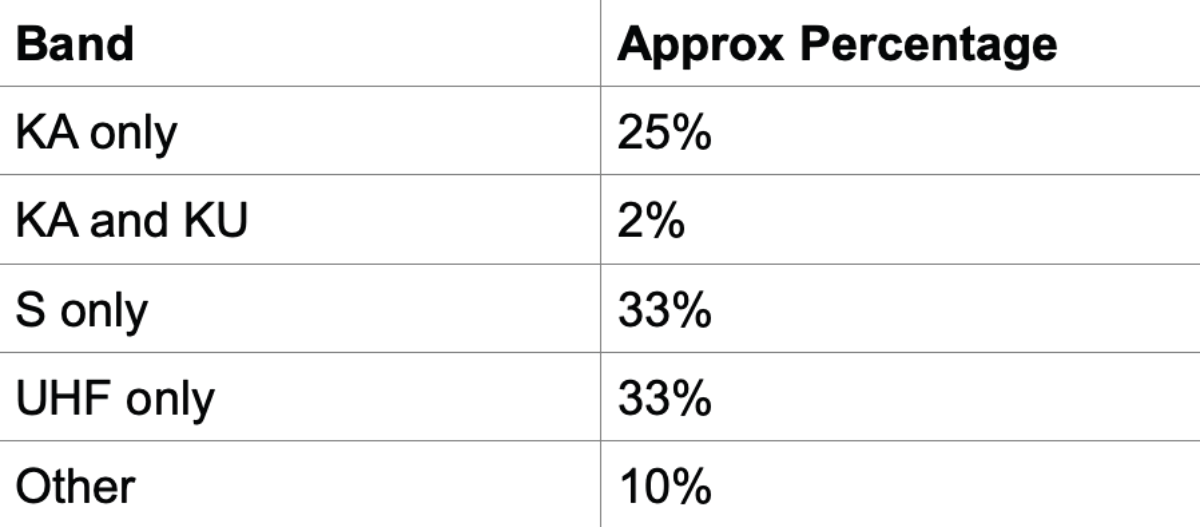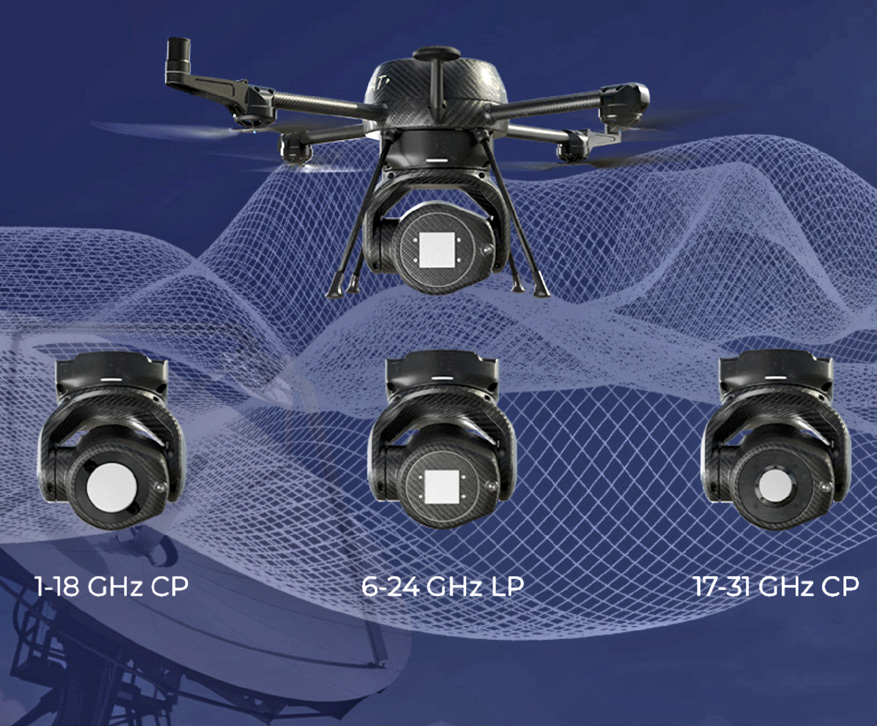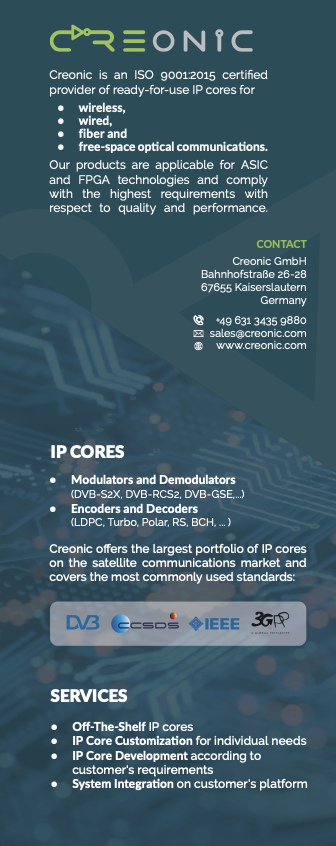Telemetry, Tracking, and Control (TT&C) has been transitioning from S- to Ka-band. This shift is impacting across the military/agency/government (MAG) and commercial market segments. Given the obvious robustness and legacy of S-band, can Ka-band, that is more susceptible to rain fade and mis-pointing errors, cope with such an important task?

Freeing Up Spectrum
While S-band is undeniably well-suited to the all-important functions of TT&C, it is clear that something needs to be done to free up spectrum.
Last year witnessed the addition of 2,664 objects in space. During the next decade, there could reportedly be as many as 100,000 new commercial and MAG satellites launched and each new launch is placing more pressure on an already congested environment.
Simply put, the industry can not continue to manage all of these spacecraft using S-band — something has to change to free up much-needed spectrum.
There’s certainly no surprise, then, that that the transition to other bands is underway. This transition has started with a definite move toward Ka-band.
What might be unanticcipated is that recent statistics suggest that, even a few years ago, Ka-band overtook S-band as the band of choice, with approximately 35% of satellites only using Ka-band for TT&C, with a further 30% applying a combination of Ka- and Ku-band.
Meanwhile, only 12% use S-band, with a few using S- in conjunction with another band. Also interesting is that S-band seems to be the choice for Earth Observation (EO) applications, whereas telecoms are almost exclusively using Ka-band.
However, it is obvious that the mega constellations are a large reason for this shift. If the constellations are removed from consideration, then S-band remains slightly ahead, as illustrated in the following chart...
Can Ka-Band Cope?
When something goes wrong in any other type of satellite feed, the worst case scenario is loss of business due to an unhappy customer. This is, of course, something satellite operators take extremely seriously and strive to avoid.
However, the absolute worst case scenario for errors in a TT&C application is the loss of spacecraft, which could even lead to a collision in space which would impact the entire space environment.
 Ka-band overtook S-band as the band of choice,with
Ka-band overtook S-band as the band of choice,withapproximately 35% of satellites
 When mega constellations are removed from
When mega constellations are removed fromconsideration, then S-band remains slightly ahead
S-band has always been the first choice for these systems due to it`s robustness and wide beam, and S-band will usually work even with a minor mispointing of an antenna.
Operators use expensive, but highly reliable, antennas to ensure seamless connectivity. Can Ka-band, then, actually cope with handling something as important as these operations?
There are numerous challenges with moving to Ka-band. Perhaps the most notable are those of accuracy and weather permeation.
With Ka-band, ensuring highly accurate pointing is vital. Unlike S-band, mispointing will lead to errors and the potentially loss of signal.
The challenges of weather permeation are well-documented, with many Ka-band services suffering in extreme weather conditions. This often needs to be managed by having back- up sites and reliable weather mapping in order to easily switch before an outage does occur..
However, while it brings challenges, Ka-band also brings a number of benefits. Aside from spectrum availability, Ka-band delivers much more capacity than S-band at the same spectral efficiency and use smaller antenna sizes.

Solving these challenges will certainly be advantageous for the entire industry.
The Switch to Ka-Band
The move to Ka-band is shifting the way in which TT&C is performed.
To make this work without causing risk to the space environment (especially once this is experienced on a large scale), means innovation is required as well as insights on network performance plus the ability to easily — and rapidly — switch when environmental conditions impact a given site. However, this move away from S-band is also leveling the playing field.
While S-band TT&C antennas have historically been developed by only a few companies, with Ka-band, there are numerous companies that make their mark in this domain.
This likely also means more innovation than ever before experienced will be seen, as these companies look to gain a competitive edge. These antennas will be under a great deal of scrutiny to ensure they offer the highest possible quality.
Insights on antenna performance are always important, especially for TT&C, because even in the most stable of environments, things can change.
This will be even more important in Ka-band, helping to ensure that these antennas are accurate all of the time, keeping that much needed link to the satellites. Also, more important than ever will be realtime knowledge of environmental conditions at any given site and how that will change.
New challenges with mitigating interference onsite will play a crucial role as operators now will have a much broader frequency spectrum to guard.
Another important concern to address will be that of security. Having TT&C handled on an isolated band makes it more secure. It is likely we will see operators continue to use dedicated antennas for TT&C, even if they are operating within Ka-band.
The future of TT&C
It will be interesting to note how this evolution plays out. Shifting to Ka-band opens up capacity and will likely lead to an increase in innovated products. This could ultimately lead to TT&C becoming more efficient and, perhaps in the long-run, even safer.
What is certain is that the transfer process is not without challenges — operators that are carefully planning networks ensure they remain error-free, thereby keeping the space environment safe for all concerned.
www.quadsat.com

Joakim Espeland
Author Joakim Espeland is the Chief Executive Officer and Co-Founder of the company. Joakim is an entrepreneur, electrical and mechanical engineer as well as a satellite field engineer and examiner. He developed QuadSAT from his initial iidea to a start up company and upscaling the firm’s global operations.
QuadSAT’s applications for the satellite communications industry.
The QuadSAT system increases access to antenna diagnostics. The drone-based system enables data gathering when and where it is needed. In its hard case, the system is easily transported for use at a user’s premises as well as in-field. Custom pre- and post-flight software ensures repeatability, control over UAS during measurements, ease of operation, and data delivery in a uniform format.


